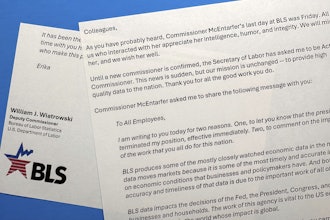
WASHINGTON — As Congress and the Biden administration continue to make progress on negotiations to invest in our nation’s failing infrastructure, the National Association of Manufacturers released a new study detailing the short- and long-term damage to the American economy if the corporate tax rate were raised to 25%, the top marginal tax rate were increased, the 20% pass-through deduction were repealed, certain expensing provisions were eliminated and more.
In April, the NAM released a study on the harmful impacts of rolling back key provisions of the Tax Cuts and Jobs Act, including raising the corporate tax rate to 28%.
 Timmons
Timmons
The negative consequences would include the following:
- One million jobs would be lost in the first two years.
- The average reduction in employment would be equivalent to a loss of 500,000 jobs per year over the next decade.
- By 2023, GDP would be down by $107 billion, by $169 billion in 2026 and by $89 billion in 2031.
- Ordinary capital, or investments in equipment and structures, would be $70 billion less in 2023 and $70 billion and $51 billion less in 2026 and 2031, respectively.
- And more.
Click here for a summary of the study’s details and findings. Read the full study, “Dynamic Estimates of the Macroeconomic Effects of Tax Rate Increases and Other Tax Policy Changes,” conducted by Rice University economists John W. Diamond and George R. Zodrow,” here.
Background on manufacturing growth following the enactment of tax reform in 2017:
- In 2018, manufacturers added 263,000 new jobs. That was the best year for job creation in manufacturing in 21 years.
- In 2018, manufacturing wages increased 3% and continued going up—by 2.8% in 2019 and by 3% in 2020. Those were the fastest rates of annual growth since 2003.
- Manufacturing capital spending grew by 4.5% and 5.7% in 2018 and 2019, respectively.
- Overall, manufacturing production grew 2.7% in 2018, with December 2018 being the best month for manufacturing output since May 2008.
Manufacturers strongly support President Biden’s call for bold infrastructure investment, which can be achieved through a combination of revenue sources like those identified in the NAM’s “Building to Win.”






















